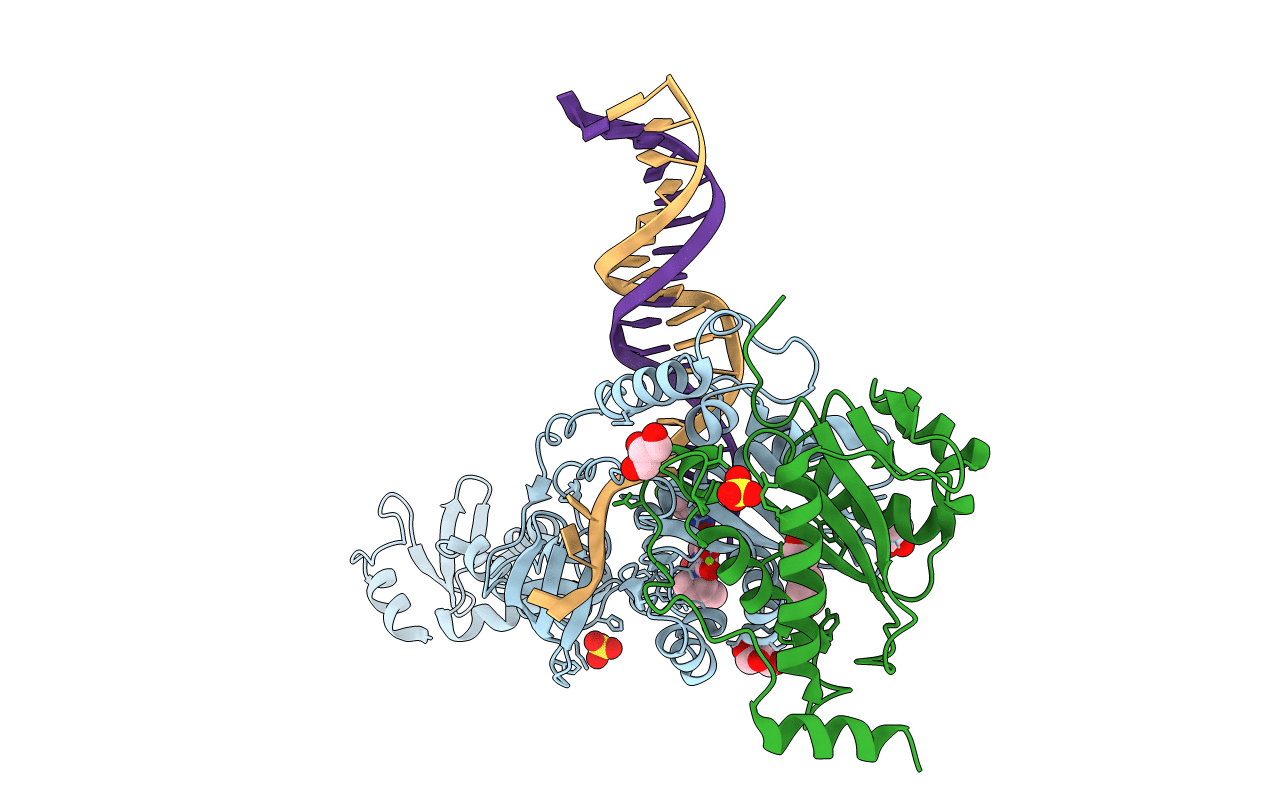
Deposition Date
2011-05-18
Release Date
2011-07-13
Last Version Date
2023-09-13
Entry Detail
PDB ID:
3S3O
Keywords:
Title:
Crystal structure of the Prototype Foamy Virus (PFV) N224H mutant intasome in complex with magnesium and Dolutegravir (S/GSK1349572)
Biological Source:
Source Organism:
Human spumaretrovirus (Taxon ID: 11963)
Host Organism:
Method Details:
Experimental Method:
Resolution:
2.55 Å
R-Value Free:
0.23
R-Value Work:
0.20
R-Value Observed:
0.20
Space Group:
P 41 21 2


